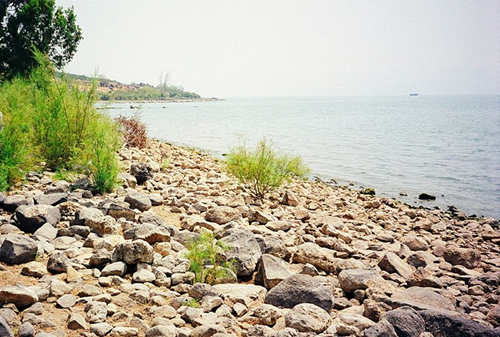12 Jan. Jesus recruits his friends from the BarJonas & BarZebedee families
"When Jesus was walking by Lake Galilee, he saw Simon and his brother Andrew throwing a net into the lake because they were fishermen."
"Jesus said to them, 'Come follow me, and I will make you fish for people.' So Simon and Andrew left their nets and followed him."
"Going a little farther, Jesus saw two more brothers, James (Greek: Jacob) and John, the sons of Zebedee. They were in a boat, mending their nets. Jesus immediately called them, and they left their father in the boat with the hired workers and followed Jesus."
(Mark 1:16-20)

In today's reading, Jesus moved back to the northern shore of the Sea of Galilee – an area where he was now well known. On the lakeside near Bethsaida (meaning ‘house of the nets’) Jesus called the fishermen Simon and Andrew (whom he had met earlier by the River Jordan) (see John 1:35-42) and James and John to follow him.
Both sets of brothers came from prosperous 'middle-class' fishing families. Simon and Andrew were the sons of John ('BarJonas', in Hebrew, means 'Son of John' - see John 1:42), while James and John were the sons of Zebedee. Both were well-established family fishing businesses with hired workers.
Jesus thought Simon was 'solid as a rock' and gave him the nick-name 'Cephas' or 'Peter', meaning 'a rock' (see John 1 42). After Jesus's death, Simon 'Rocky' BarJonas became one of the first leaders of the early Christian church (see Acts 2:14).
Jesus probably knew these local fishermen well and, as a skilled carpenter, may even have repaired their wooden fishing boats. The Galilee fishing industry was very important in Jesus’s day – as it still is. Pickled fish – mainly the Tilapia (now also known as 'St Peter's Perch') – were exported around the Mediterranean world.
The exact site of Bethsaida was uncertain until recent archaeological excavations near to where the River Jordan enters the Sea of Galilee uncovered the remains of the fishing village that was the birthplace of Simon Peter, Andrew, James and John. Near Bethsaida, Jesus restored the sight of a blind man (see Mark 8:22-26), though he later criticised the inhabitants of the town for their lack of faith (see Matthew 11:21-22).
The settlement was rebuilt in the 2nd century BC and became part of the tetrarchy of Philip on the death of Herod the Great in 6BC. Philip, whose position relied on the support of the Romans, renamed the town Julias, in honour of the mother of the reigning emperor, Tiberias Caesar (14-37AD). He considerably Romanised the town, which may help to explain why Simon, Andrew, James and John – all religious Jews – were eager to leave the town and follow Jesus.
The site of Bethsaida is now on the east bank of the River Jordan, 1 mile / 2 km north of where it enters the Sea of Galilee. Today, visitors can pass through a re-constructed gateway and climb the settlement mound (El Tell / Tel Bethsaida) on which the ancient Bronze Age / Iron Age settlement stood.
Excavations on the lower-lying site of 1st century Bethsaida have uncovered remains of a paved street, a fisherman’s house built around a courtyard (where lead weights, hooks and anchors were found), and another house belonging to a vine-grower (where wine jars were uncovered in the cellar).
The photo shows the northern shore of the Sea of Galilee.
You can find out more about Bethsaida on @ https://www.thebiblejourney.org/…/jesus-performs-healing-m…/
